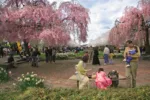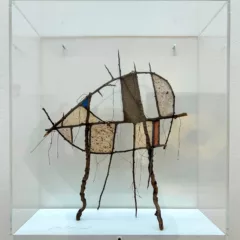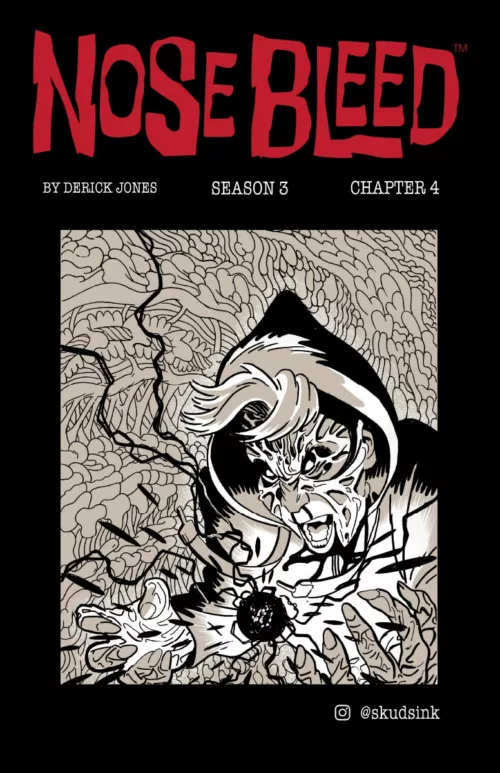The darkened gallery of the Perelman building at the Philadelphia Museum of Art (PMA) which houses Phulkari: The Embroidered Textiles of Punjab from the Jill and Sheldon Bonovitz Collection provides an ideal setting for the splendid, richly colored textiles on view. Phulkaris are made with imported silk thread, hand-embroidered on home-made simple, cotton–handwoven and usually dyed dark colors such as red, brown, golden tan, and a blue so dark that it approaches black. They were worn by women as outer wraps on special occasions and used as blankets, wall hangings, and wrappers for sacred objects. The exhibition presents them both on mannequins, as they would have been worn, and covering the gallery walls.
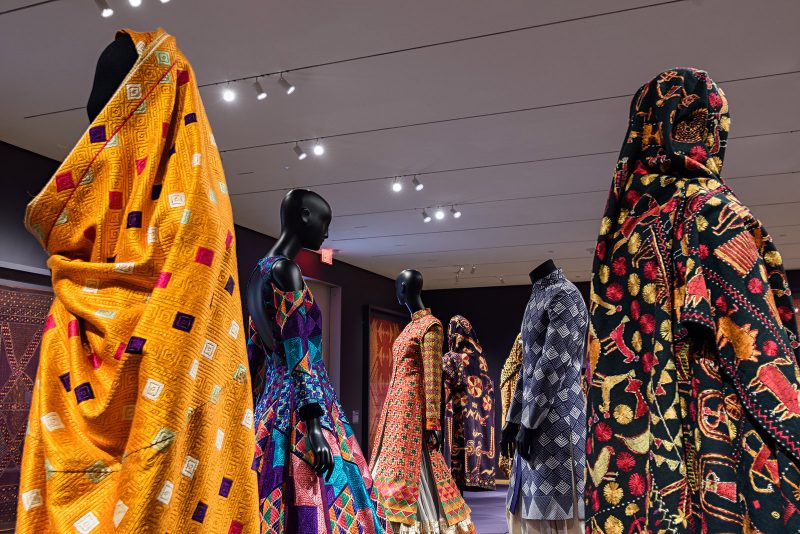
Embroidery and identity
Phulkaris were produced by women and became an important part of a bride’s dowery. They were begun as soon as a girl was born, by her mother, grand-mother, or aunts, and could take as long as three years to produce, sometimes with multiple women working on a single textile. Older phulkaris became part of a family’s valued possessions and were handed down for generations. Some are figurative, with illustrations of everything from the daily activities of village life, modern inventions such as train travel, circus scenes and wedding jewelry, to religious shrines. Others are abstract, and some of the designs, a style termed Bagh, have small-scale patterns which cover the entire cotton ground with the expensive silk thread, creating the impression of finely woven jacquards. The idea of using hand embroidery to achieve the effect of weaving–an available technology–is quite astonishing. It indicates the availability of willing and highly skilled female labor.
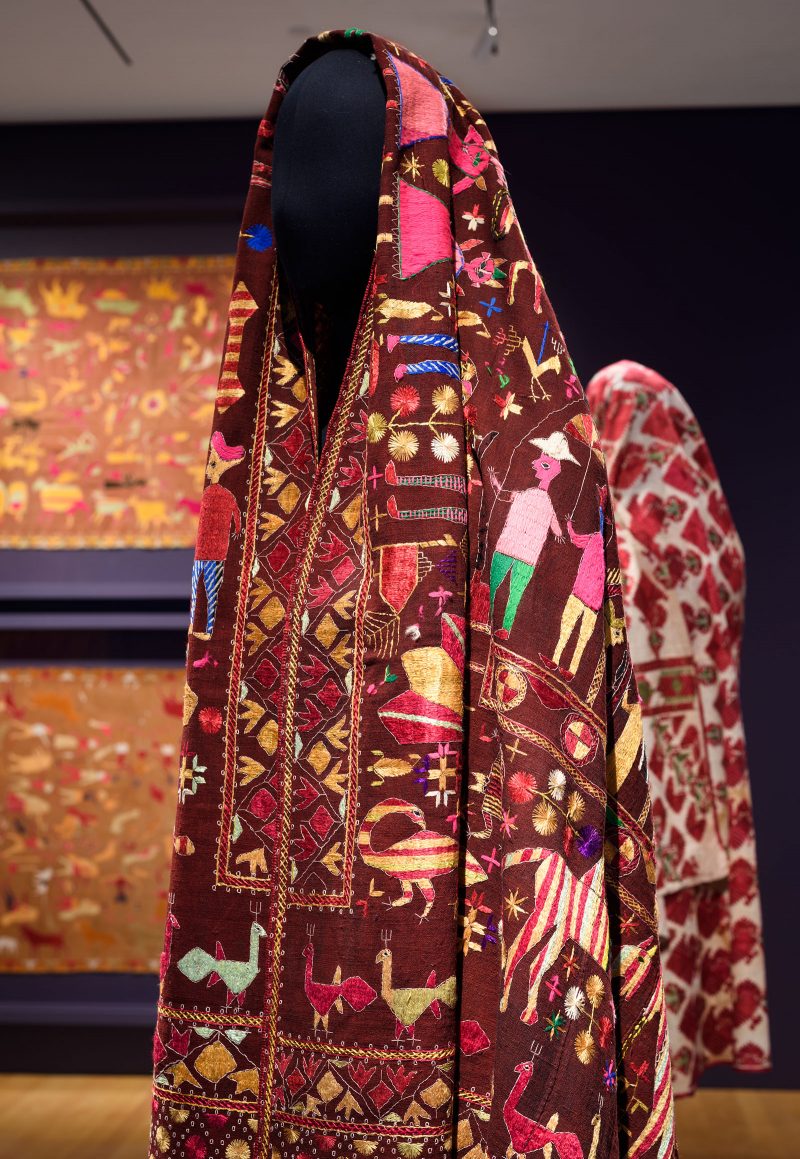
My favorites are the more naive designs illustrating aspects of village life. Many of them create sophisticated figure/ground patterns of people and animals drawn to varying scale and to various orientations of the fabric. They portray people riding trains, dancing, and performing religious rituals, women spinning cotton and churning butter, men conducting business, riding elephants and camels, walking dogs, playing musical instruments, and carrying goods that hang from a yoke across the shoulders. A variety of birds and animals wander throughout the activities.
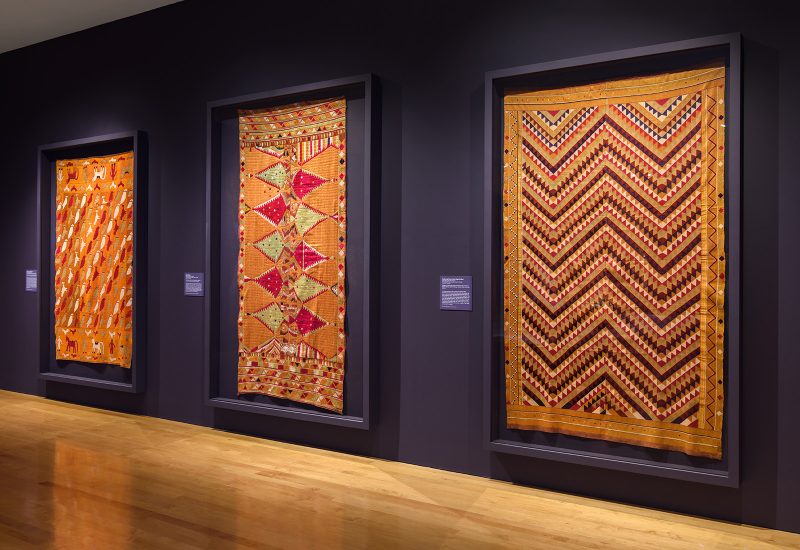
Made for movement
Almost all the phulkaris employ a bright and warmly colored palette primarily consisting of browns, oranges, golds, red, and shocking pinks which give the genre a recognizable identity. The glisten of the silk threads must have been part of the intended effect when they were used as garments, since all the examples on view show a long drape of fabric that would have swayed with the wearer’s movements. I would love to see them as worn, and the only hint is provided by a video of a fashion show by the designer Manish Malhotra, who has revived an interest in phulkari, which he uses in combination with other fabrics. Two of his designs are also on view but in order to see the video, placed almost on the ground, you’ll have to sit on the floor–as I did.
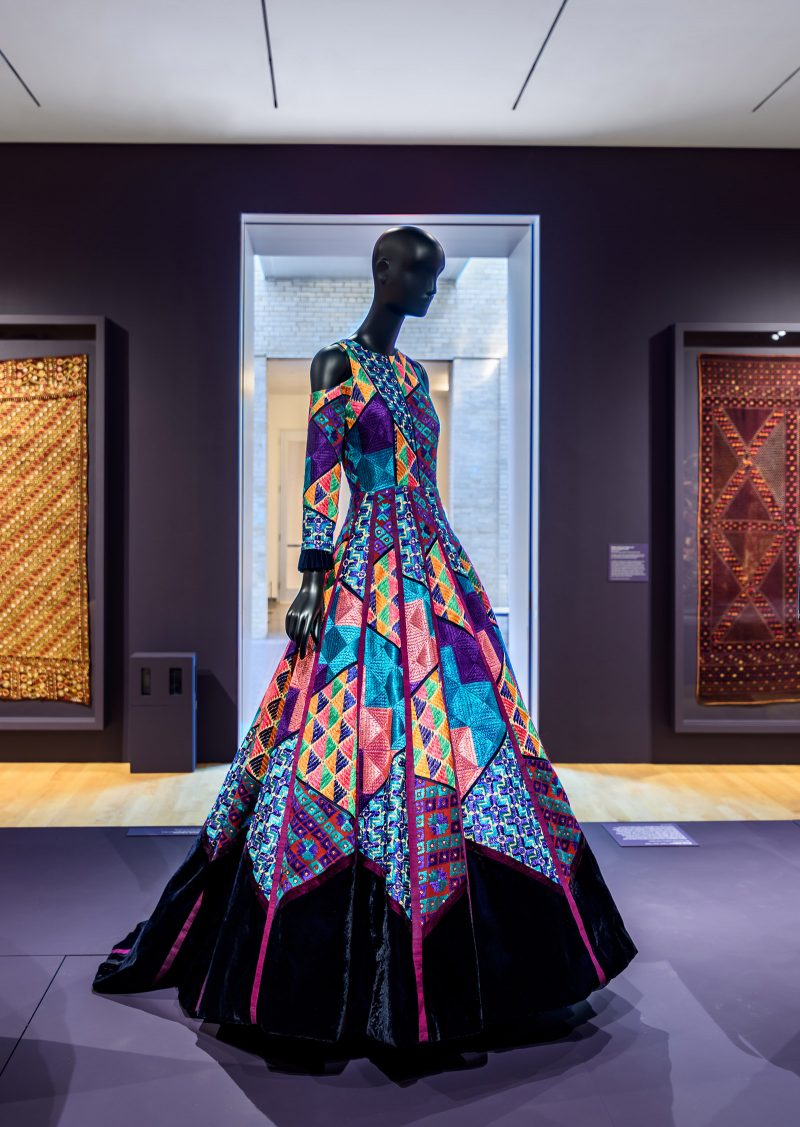
Partition and phulkaris
The textiles on view betray a range of technical skill in both the stitchery and designs. Some show a sophisticated ability to render forms and were obviously transferred from patterns, while others seem to have been made up as the embroiderer went along. It is hard to believe that the precision of stitching in the Bagh phulkaris weren’t made by professional craftsmen. There is no surviving literature that would indicate how designs circulated–indeed, there is almost no surviving history of phulkari in general, hence the significance of this collection and its catalog.
These textiles are inevitably tied to the history of the Punjab, which was violently split in 1947, with the establishment of the state of Pakistan. The division of the Punjab resulted in huge loss of life and a large group of exiles who have settled around the world. The exhibition’s introduction sets the history and fate of phulkari within the geography and history of their origin; this is explored in depth by Darielle Mason in the handsomely illustrated exhibition catalog, which also includes an essay by Cristin McKnight Sethi. There are multiple stories of phulkari history, and sources and influences for their stitchery and overall designs, which vary according to the vested, political interests of the tellers. We have to be grateful that some of the pre-Partition textiles survive, offering their material properties as the only certain evidence of their history.


